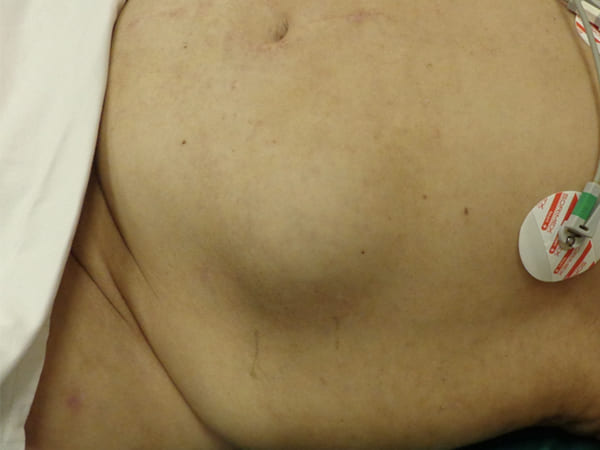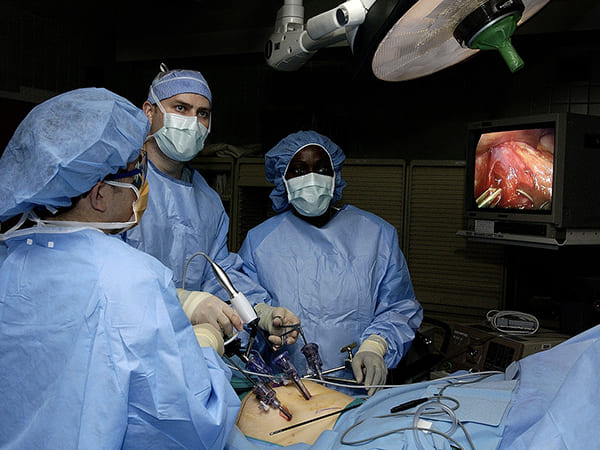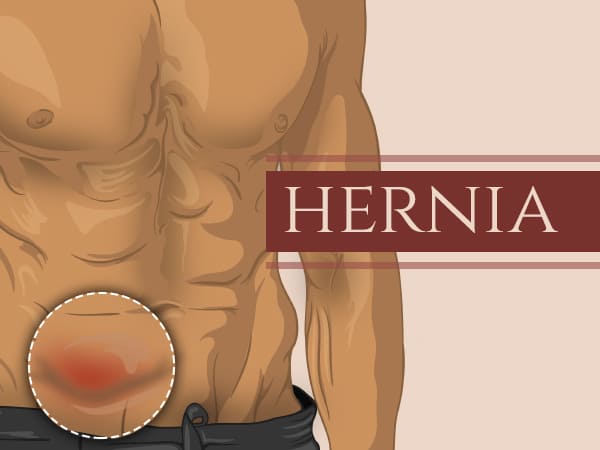Disorders Cure
oi-Neha Ghosh
Hernia occurs when a part of an organ or tissue bulges or protrudes out through a weakened area in the muscle wall of the abdomen region. A hernia can develop in your abdomen, but it can also appear in the inner upper thigh or groin area. Hernia is common; about 5 per cent of the people will have an abdominal wall hernia at some point in their life [1].
Hernia, if left untreated can lead to potentially serious complications. Also, hernias can be life-threatening if they become strangulated.
Causes And Types Of Hernias?
Depending on the causes hernia differs and types of hernia include:
• Inguinal hernia – This type of hernia makes up 75 per cent of all abdominal wall hernias that affect men (27 per cent) more as compared to women (three per cent) [2]. Inguinal hernias are divided into two different types – direct and indirect which develop in the groin area. Direct inguinal hernias occur due to weakness in the abdominal wall muscles, which usually happens as you age or due to straining or heavy lifting. And indirect hernia is caused by a birth defect in the abdominal wall that is congenital (present at birth).
• Femoral hernia – It usually develops when a portion of tissue pushes through the wall of the femoral canal, which appears as a bulge in the groin. The causes of femoral hernias are being overweight and straining while passing stool, exercising or coughing. Femoral hernias affect women more as compared to men [3].
• Incisional hernia – This is the second most common type of hernia. It occurs after an abdominal surgery where there is an incision in the abdominal wall. So, incisional hernias are more likely to develop here due to weakening of the abdominal wall muscles [3].
• Umbilical hernia – This is also the second most common type of hernia which often affects babies and overweight adults. Umbilical hernia occurs when the connective tissue of the umbilical ring isn’t fully closed, resulting in protrusion at the site of the belly button [3].
• Epigastric hernia – In this type of hernia, tissue bulges out through a weakened area in the abdominal wall in the upper part of the abdomen.
• Diaphragmatic hernia-This type of hernia is a birth defect, which usually occurs when there is an abnormal opening in the diaphragm. Organs in the abdomen like stomach, intestines or liver can bulge out through this opening in the diaphragm and move up to the chest [3].

Symptoms Of Hernia
• Swelling in the groin or abdominal region.
• Pain, burning, a feeling of pressure or pulling sensation during physical activity [4].
• A dull aching sensation.
• Nausea and vomiting
• Increased swelling in the groin or abdominal region.
 Weak Digestion: Symptoms, Causes And Home Remedies
Weak Digestion: Symptoms, Causes And Home Remedies

Risk Factors Of Hernia
• Family history of hernias [5]
• Age (middle-aged and elderly) [6]
• Pregnancy [7]
• Smoking [8]
• Lifting heavy objects for a long period of time [9]
• Overweight [10]
READ RELATED: The ‘powerful’ supplement that could enhance your immune response to bacteria and viruses

Complications Of Hernia
If hernia is left untreated it may enlarge and become painful. A part of the intestine could get trapped in the abdominal wall and can obstruct the bowel and cause severe pain or constipation. This can further lead to strangulation of the hernia which can cause the intestinal tissue to become infected or die due to lack of blood flow. A strangulated hernia is life-threatening and requires immediate medical attention [11].
 Back Pain: Causes, Symptoms, Risk Factors, Diagnosis And Treatment
Back Pain: Causes, Symptoms, Risk Factors, Diagnosis And Treatment

Diagnosis Of Hernia
The doctor will conduct a physical examination by feeling a bulge in the area where the hernia is located. The doctor will then conduct further tests to diagnose hernia these include endoscopy, CT scan, MRI scan and ultrasound test.

Treatment Of Hernia
Surgery [12]
Open or laproscopic surgery can help treat hernia. During an open surgery, the surgeon makes a large cut in the groin or abdomen and then pushes back the protruding organ or tissue back in place and removes the sac that held the hernia. The weakened muscle wall is either stitched or a fine synthetic mesh is placed in the area to strengthen the abdominal wall and prevent the hernia from arising again. Open surgery takes a long time, up to six weeks, to recover.
In laparoscopic surgery, the surgeon makes small cuts and a laparoscope (a long, thin tube with a camera attached to it) and surgical tools are inserted to perform the surgery. This type of surgery has a faster recovery.

Prevention Of Hernia
• Maintain a healthy body weight
• Stop smoking
• Avoid straining during urination or bowel movements.
• Avoid lifting heavy weights
Common FAQs
Q. How do you detect a hernia?
A. You will see a noticeable lump or bulge in the abdomen or groin area, an increase in the size of the lump over time and experience swelling, pain or a burning sensation at the site of the lump area. If these things occur, consult a doctor immediately.
Q. How long does hernia pain last after surgery?
A. After surgery, you are likely to have pain for a few days.
Q. How long does hernia operation take?
A. The surgery usually takes 30 to 45 minutes.
Q. Can you get rid of hernia at home?
A. Home remedies only can help relieve pain but only surgery can get rid of hernia.
GET THE BEST BOLDSKY STORIES!
Allow Notifications
You have already subscribed
Source: boldsky blog




 10 Home Remedies To Get Relief From Hernia
10 Home Remedies To Get Relief From Hernia


















